We walked down the narrow galis (alleyways), stepping around trash piles and cow pies while dodging other pedestrians, cows, and motorcycles, following signs painted on random walls and pillars to find our hotel.
On similar walks throughout the city, we would hear the sounds of music and praying around every corner, and it was not uncommon to have to duck out of the way of pallbearers carrying a shrouded body to the banks of the Ganges, where the body would be cremated in an open wood fire.
We had made it to Varanasi, the religious capital of Hinduism and one of the oldest continually inhabited cities in the world. The name comes from two tributaries, Varuna and Assi, which together with the Ganges, bound the city on three sides. (However, most people call the city Banaras – ‘Bana’ meaning ready-made and ‘Ras’ meaning juice. The river is considered the place where the juices of life abound.) From the roof of our hotel, we had a spectacular view of the river, boats, and hundreds of kites that would fly over the city and river every afternoon.
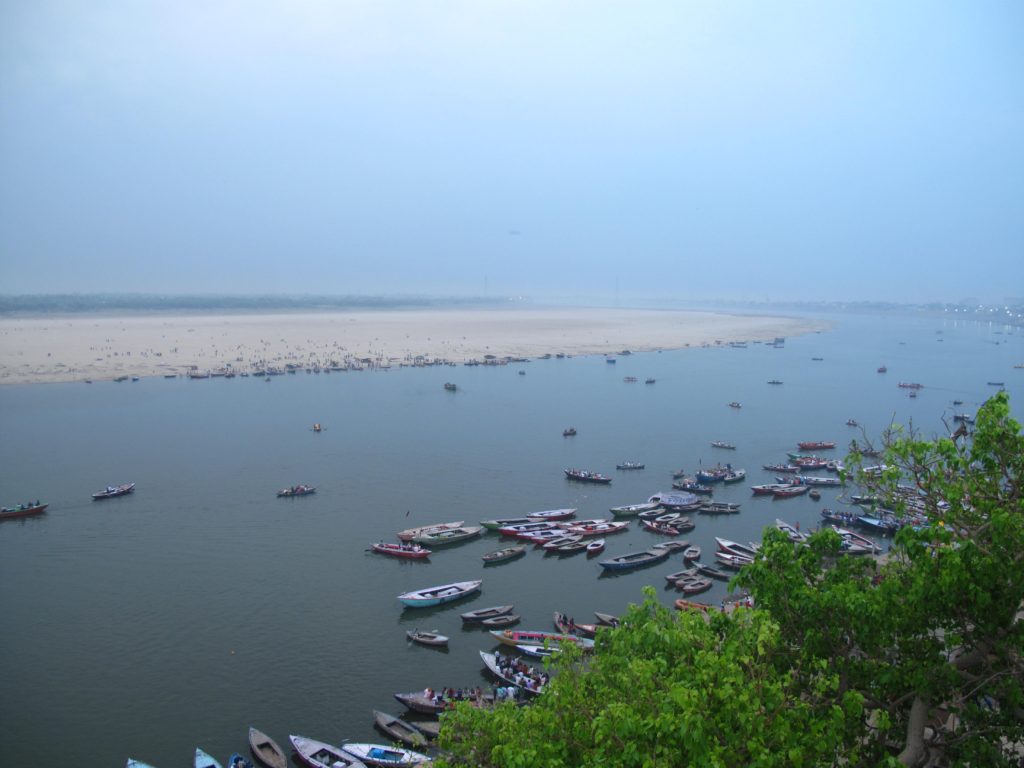
We also had a great views of the roving troops of monkeys, which hopped from building to building causing trouble (but never seemed to come down to street level).
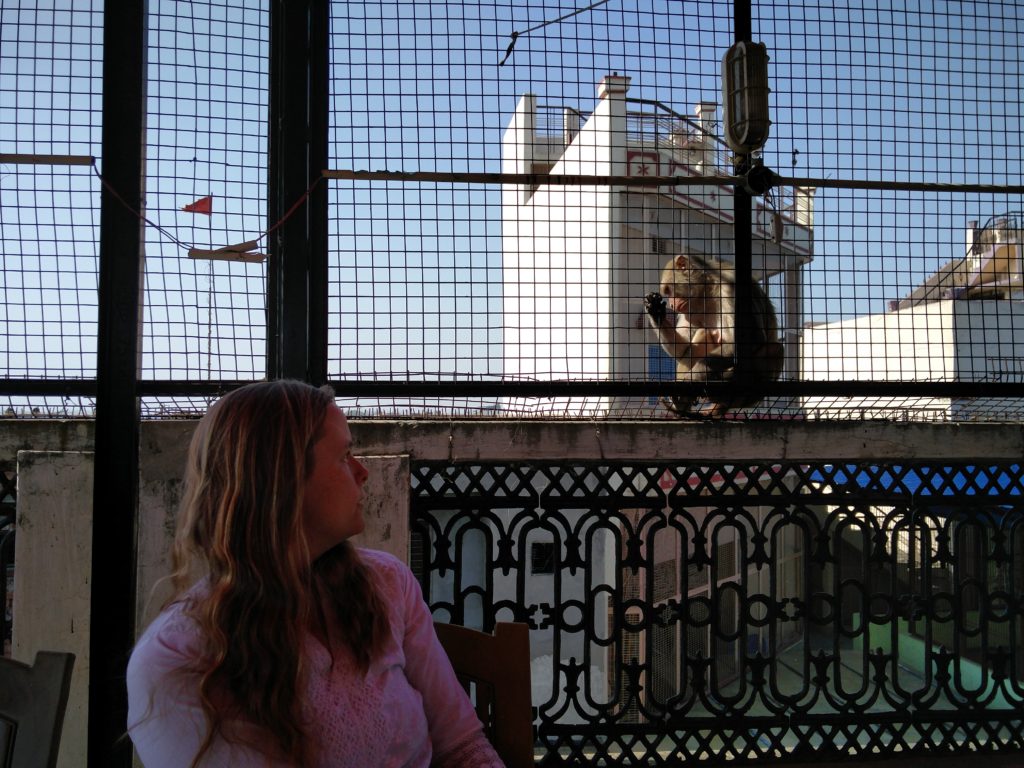
Our first order of business was to find some lassi — Sarah loves lassi, and Varanasi is famous for its special style of the Indian yogurt drink. Unlike in other places, in Varanasi the fruit is not blended with the yogurt, but manually mashed together in a large mortar and pestle, before being served in a round clay cup with more fruit decoratively arranged on top. Our favorites were both unlikely combinations, watermelon/coconut and pomegranate/chocolate.

While yogurt was easy to come by in this holiest of cities, from various “lassi wallas” with names like “Blue Lassi”, “Baba Lassi”, and “Bana Lassi”, beer was a different story. Alcohol was not available in any of the markets, but a couple fancy hotels sold it at high prices off-menu and off-record. At one of the lassi places where we got to chatting with the owner, we asked if him if he knew where we could get beer. He furtively looked around and then quietly asked us if we had a bag (luckily we carry a shopping bag with us most places we go). He took the bag, wandered off into one of the galis and came back ten minutes later with a six-pack. We felt like we were in high school again hanging around the liquor store, waiting for someone to buy us Hot 100.
Every sunrise and sunset along the Ganges, elaborate Aarti prayer ceremonies were held with conch-playing, chanting and ceremonial fire dances.
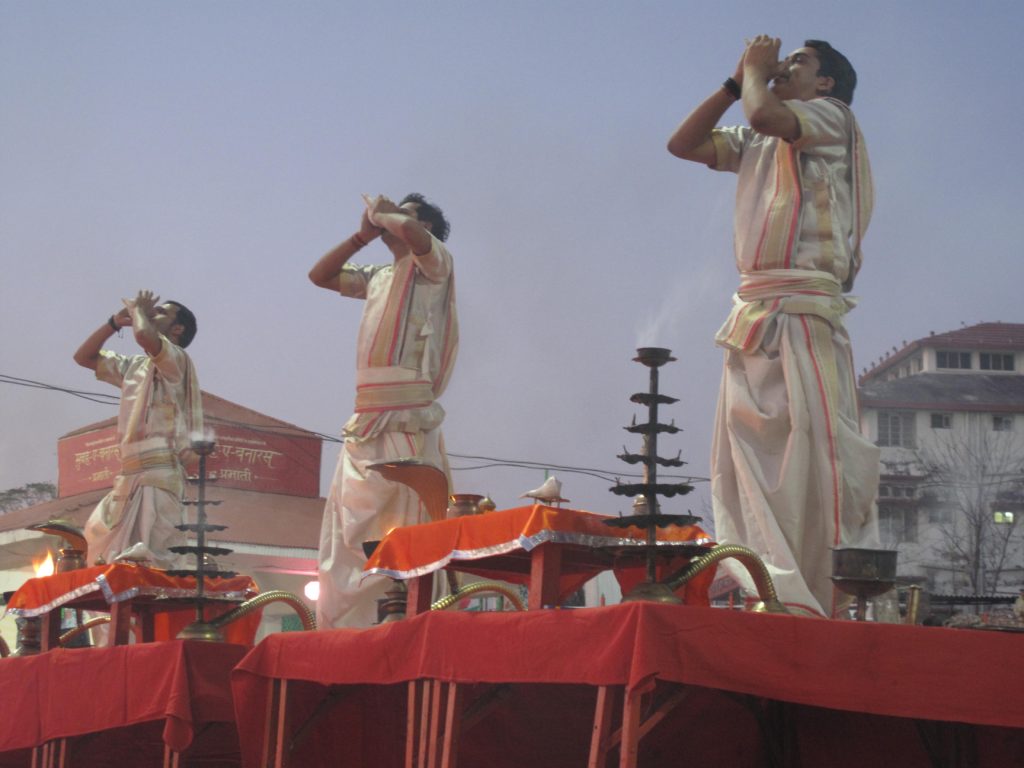
We enjoyed the ceremonies and some walks through the alleyways and along several of the 87 Ghats (steps leading down to the Ganges, along which you could walk from one end of Varanasi to the other), but mostly stayed inside catching up on work and recovering from persistent stomach troubles. When we did go out, even a 30-minute walk could be exhausting, between the crowded narrow alleys with fast-driving motorcycles and loud horns, trash and cows everywhere, and people incessantly asking “Where are you from?”, “What do you need?”, “Hash?”, “Saris!” and so on.
We also went on a longer excursion, a sunrise boat trip along the Ganges.

From the boat, we saw locals washing and bathing in the river on many of the ghats,
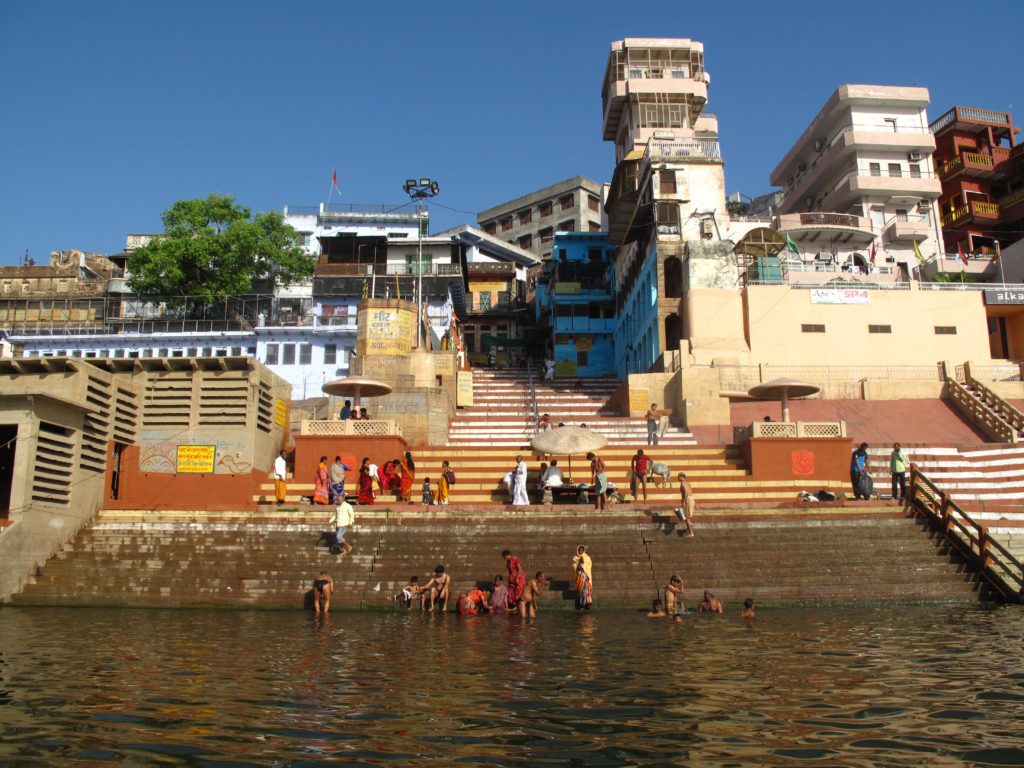
seemingly oblivious to the fact that “there are 600 million people in India who don’t use toilets, and much of that human waste ends up in the river.” This water pollution causes 80% of the diseases affecting rural Indians, killing as many as 600,000 Indians per year.
In 2010, 45% of Indians had a cell phone but only 31% had a toilet — and the current Prime Minister Narendra Modi is hoping to change this with a “toilets before temples” movement, with which he hopes to clean up the Ganges by October 2019 (the 150th anniversary of Ghandi’s birth).

Meanwhile, while the man rowing our boat didn’t speak any English, our guide told us that he used to be a Bollywood singer; and he was happy to demonstrate by spontaneously breaking into song.
Soon, we had rowed north far enough to have a view of the cremation ghat (Marnikarnika), where several cremations were underway against a backdrop of gigantic piles of firewood (photography prohibited). Hindus, who believe in reincarnation, look at death in a very different way than what we’re used to — dying in Varanasi and being cremated on the Ganges is a very special honor for them, since it’s thought to increase the likelihood of liberation or mukti from the cycle of reincarnation, in order to reach nirvana. Because of this, many ill and dying people make the trek to Varanasi in the hopes of increasing their spiritual prospects. As many as 200 cremations happen here every day (a luxury of the rich and contributor to deforestation), and many people of lesser means are floated into the river and left to the vultures after they die.
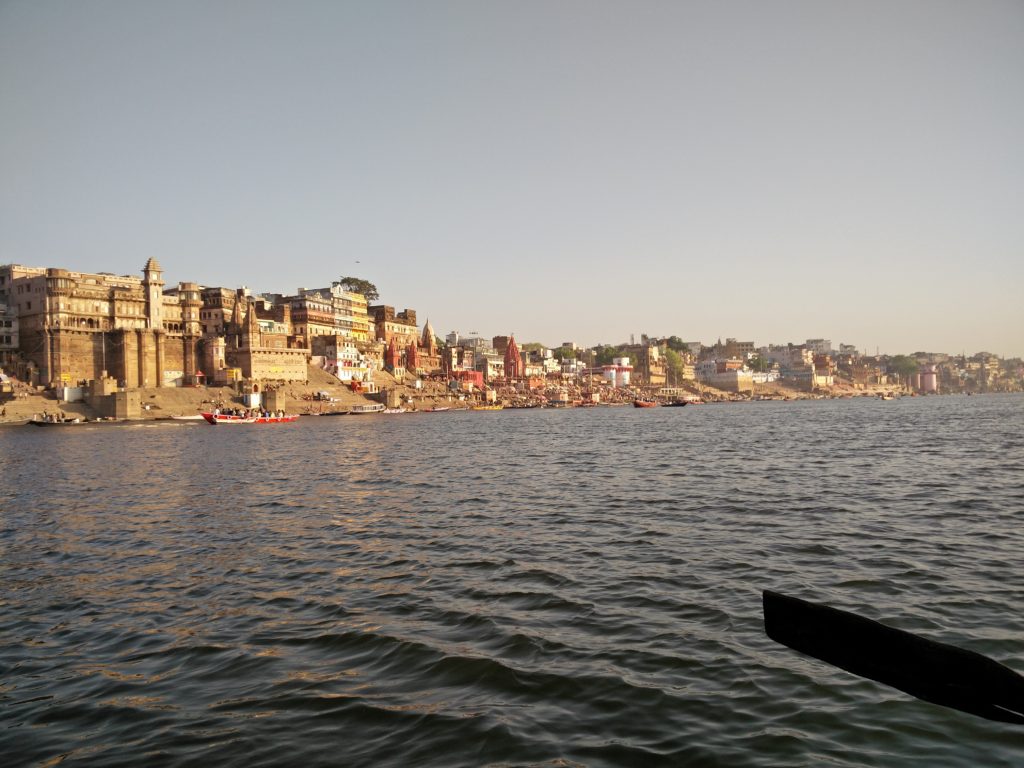
Holi, the festival of colors, is one of the biggest festivals in India and we had planned our time in India to see it here, one of the places where it’s most celebrated.
Days before the festival, street vendors selling colored powder were everywhere, and kids carrying water balloons filled with colored water were hoping to jump the gun on the festivities.
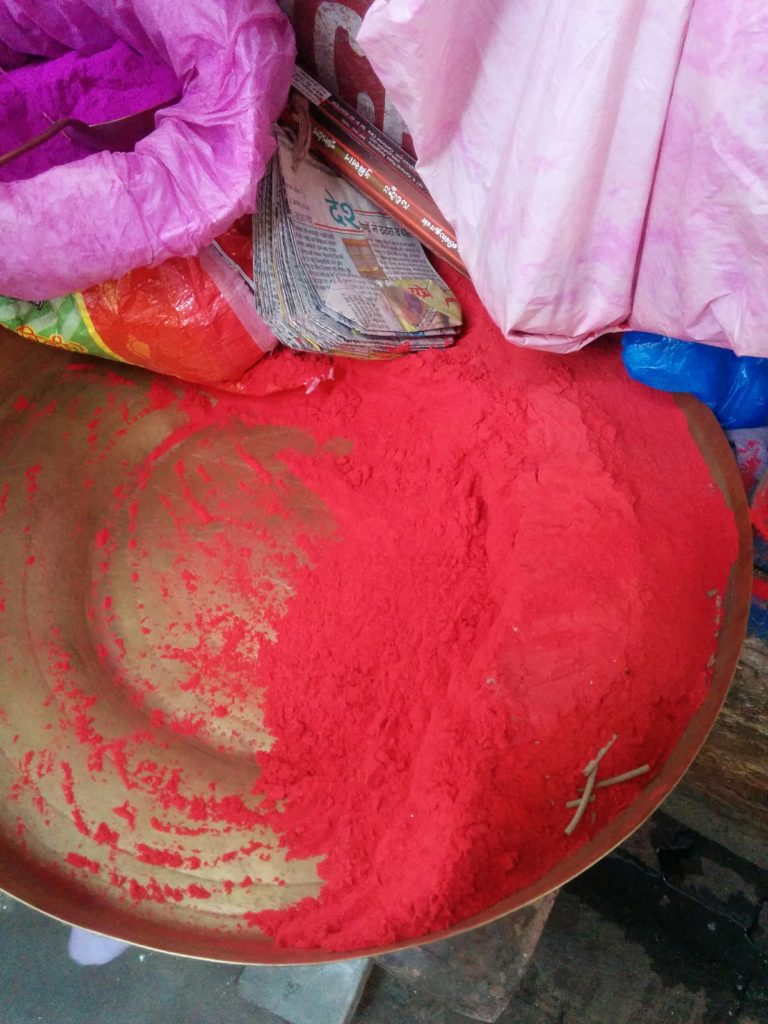
The night before Holi, thousands of people were out for the prayer service, nearly everyone with a tilaka on their forehead. Huge piles of dried cow poop and wood were also set up everywhere, including in the narrow alleyways just inches away from the densely packed buildings, which would become bonfires sometime around 3am.

At least that’s what we were told — like many hotel owners in Varanasi, ours locked his guests inside between 10pm and noon, when festivities are the rowdiest. Apparently the celebrators have no trouble finding alcohol, and going out in the throngs of drunk young men isn’t recommended or safe for visitors.
In the morning, we watched revelers with water balloons and squirt guns nailing people on the streets below from the relative safety of the roofs of their houses:
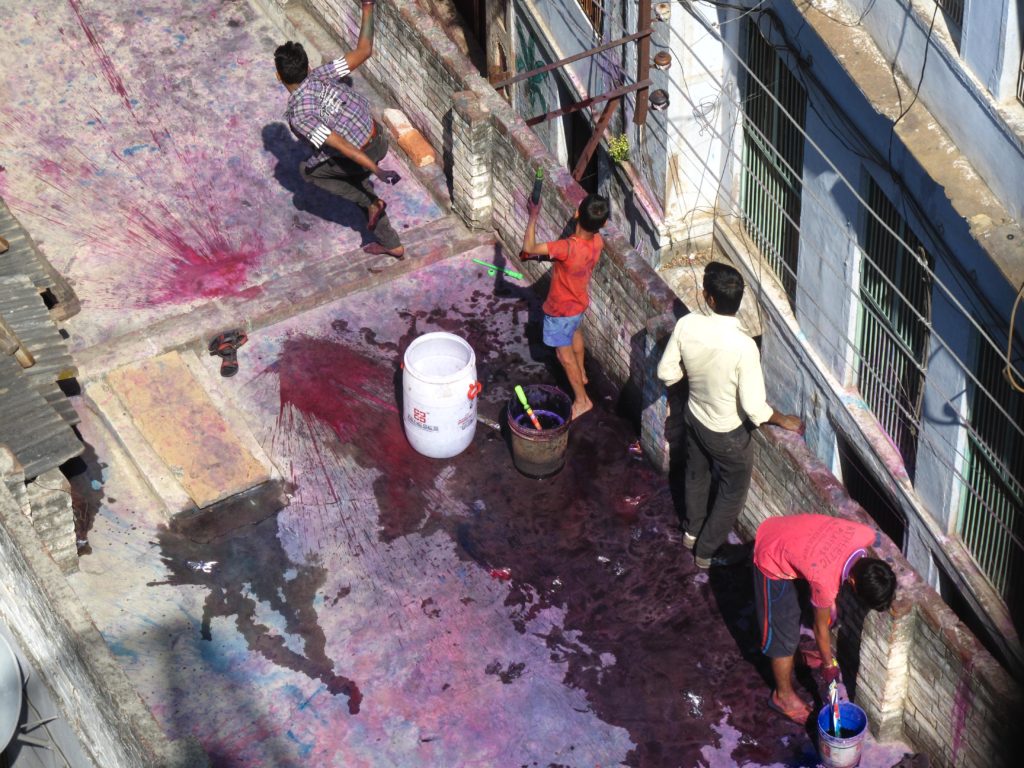
Around 11am, we saw other guests heading out and thought we’d give it a go. We donned the fresh white garments we had purchased a few days earlier (we didn’t want to ruin our limited travel clothes), and walked down to the nearest ghat.

By the time we got there, we had already been covered by colored powders and liquids. As one group of teenagers went to shake Jason’s hand, they smeared cow shit all over him — so gross! Undeterred, we continued to the ghat, which was packed with people celebrating. There were about 100 men for every woman, and, especially for Sarah, it was pretty overwhelming when groups of ten or more men would mob us, smearing more powder and liquid all over us. Luckily, not all encounters were this intense. As we were trying to clean off Jason’s bovine smudges, an older man came over and kindly started wiping the shit off Jason’s clothes. And we had a great conversation and photo session with another guy covered in silver paint (a tactic people use to make it easier to clean the powder off later on). While it was nice to meet friendly folks in the midst of the all the chaos, after about 30 minutes, we had had enough and made our way back to the hotel.
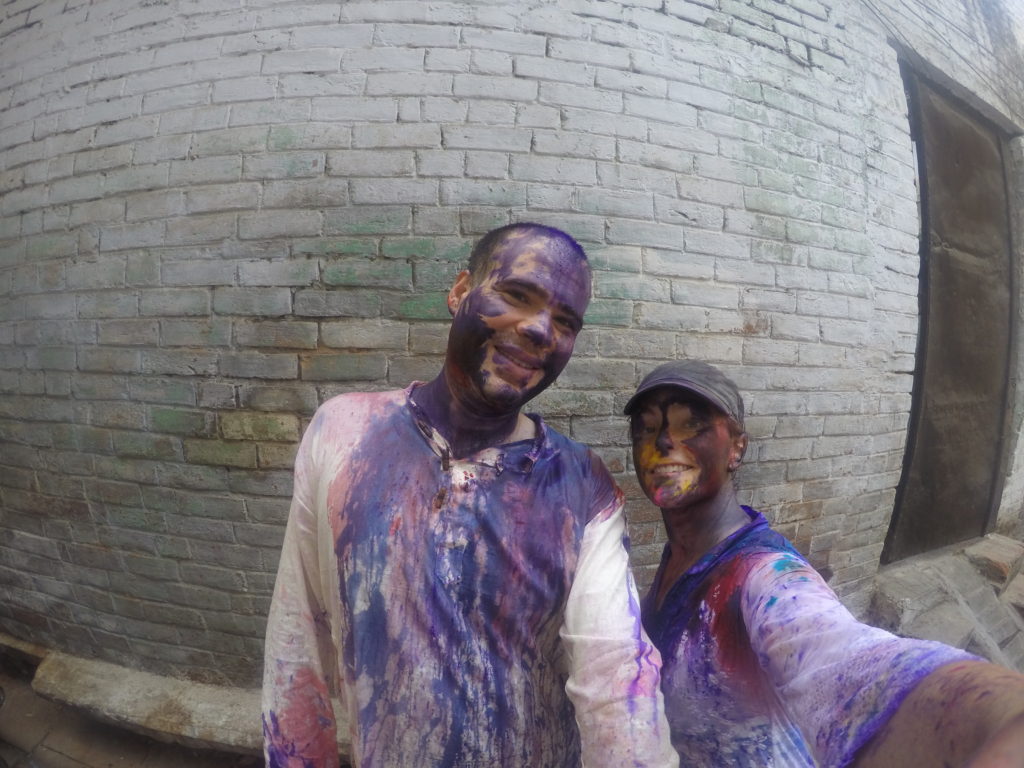
Our clothes went in the trash, and about four showers later we were mostly clean (although Jason had traces of purple on his face and Sarah in her hair for several weeks afterwards). It was a fun but draining experience, and we spent the next few days laying low besides a trip to Vishnu’s Tea Emporium, where for about $3 we enjoyed an hour-long course in Chai making from Vishnu himself.
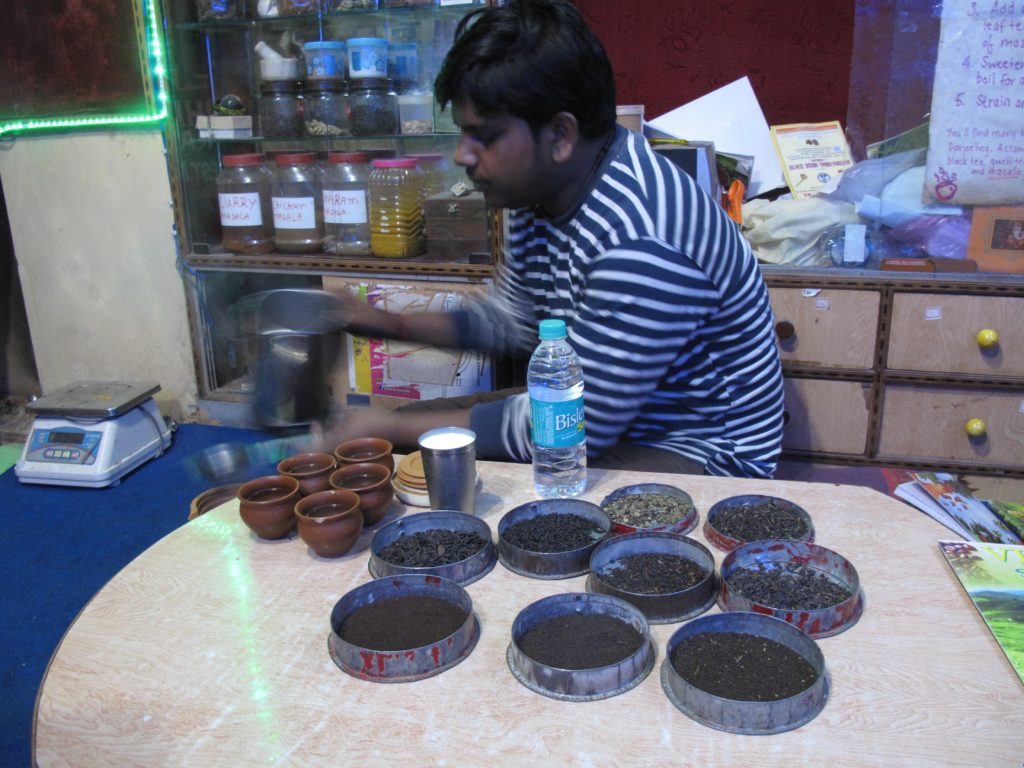
On our way out of India, we made a quick pit stop in Delhi (by some accounts, the most polluted city in the world) to do a food tour and see the Taj Mahal.
As we waited for our food tour guide, we watched two guys hold up another guy on a ladder while he was trying to do something with the hundreds of (live?) electric wires strewn from pole to pole, a common scene in India.
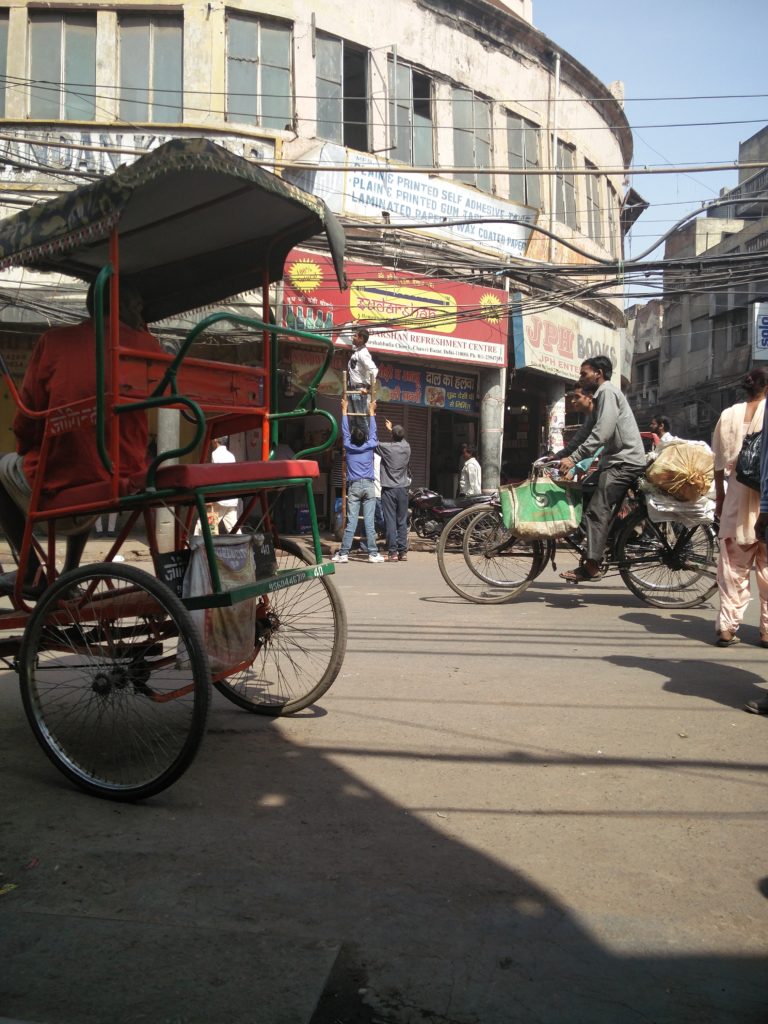
The food tour itself was fantastic, with both variety and depth. Jason’s favorite was trying back-to-back chole batura, one in traditional and one in a newer style.
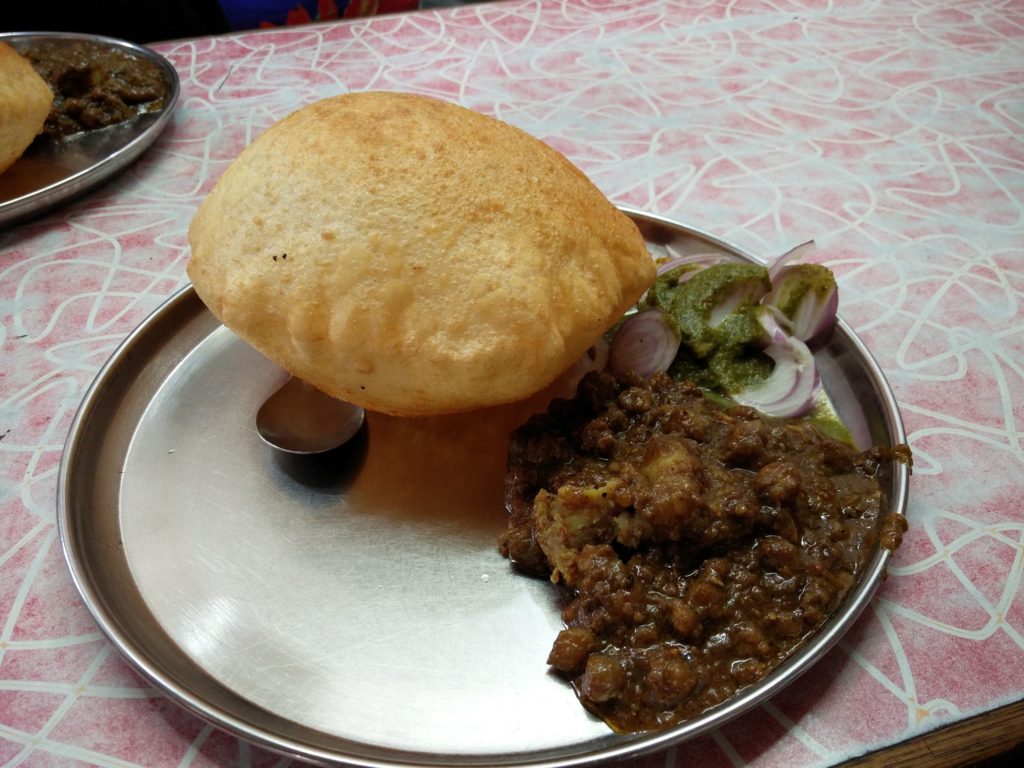
Sarah’s favorite were these Nan khathai cookies which melted in our mouths – especially amazing given that they were baked on a street cart over a charcoal fire.

While riding a tuk-tuk between sites on the food tour, we were dismayed (but not surprised) to see that in this day and age, signs like the one shown below are still needed. We had read the horrible stories about the gang rape and murder on a bus in Delhi and the woman who was assaulted by her Uber driver (not to mention Uber’s lackluster response). For Sarah, who had met so many thoughtful and respectful men from India during her college days, she assumed stories like these were isolated incidents. So she was saddened when she visited India and realized that deep-seated misogyny is pervasive in many places in India – in fact, India has been the country she felt most uncomfortable traveling as a woman (because of cat-calling, shaming looks and comment about what she was wearing (even though she made a point of wearing modest clothing), and sexually charged staring). The next day, Sarah spied a banner on a public bus that said ‘Working towards respect for women’ [emphasis ours]. At least there is some recognition that we still have a long, long way to go.
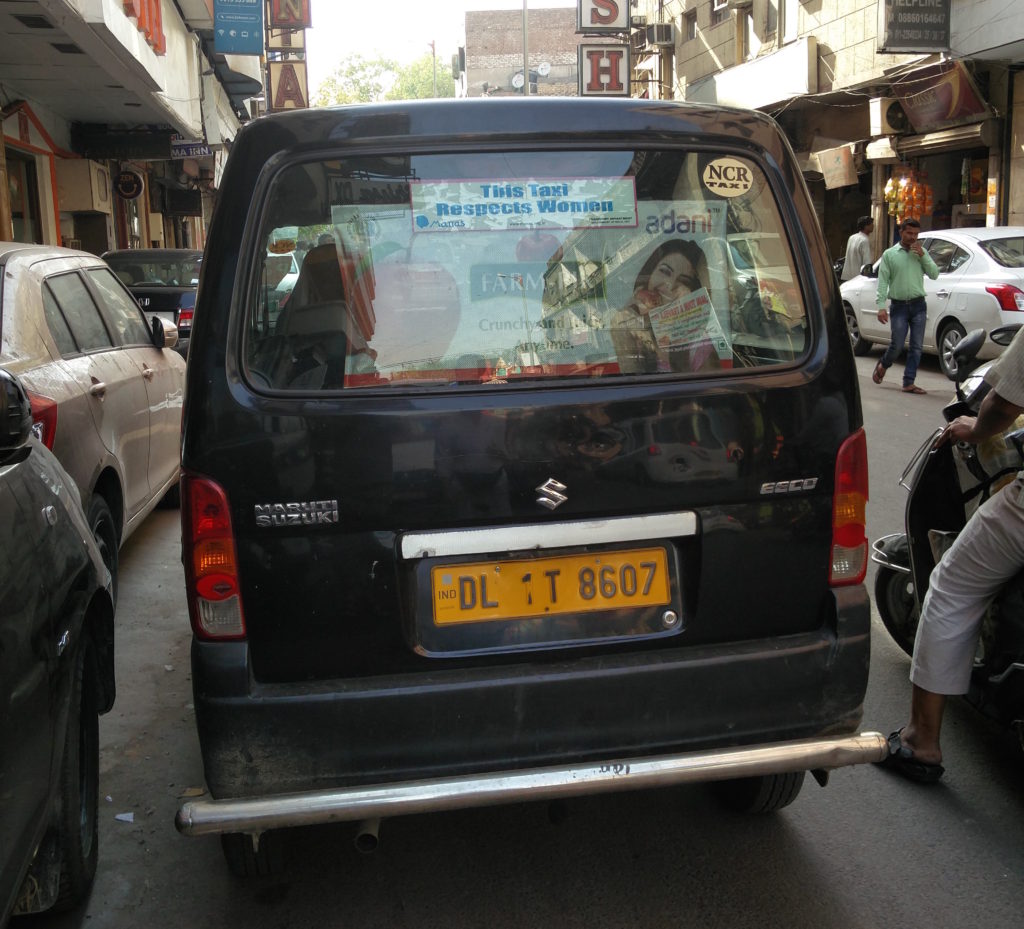
After the food tour, we were stuffed and retired to our hotel early in anticipation of another very early morning — to drive the three hours (one way) to the Taj Mahal and try to beat the crowds. Our tour guide told us a bunch of canned stories, and insisted on taking a whole set of cheesy photos. We humored him for a while and then we both said no more photos or rambling monologues.
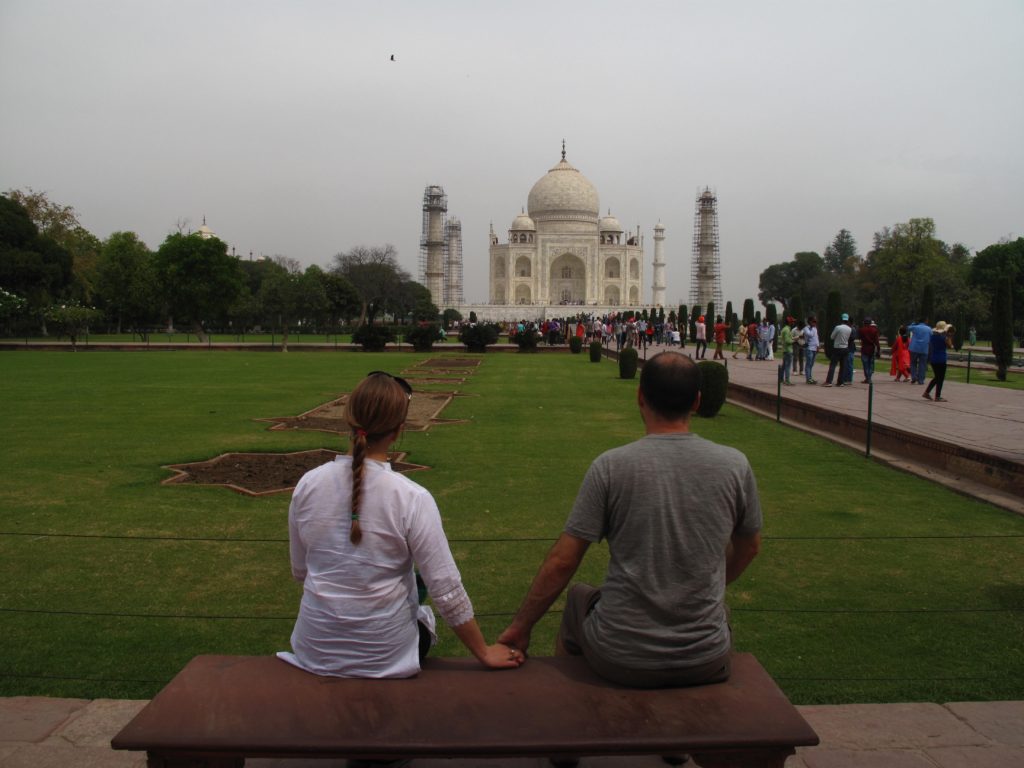
These kids also asked Sarah to take a photo with her, something which happened many times in India.
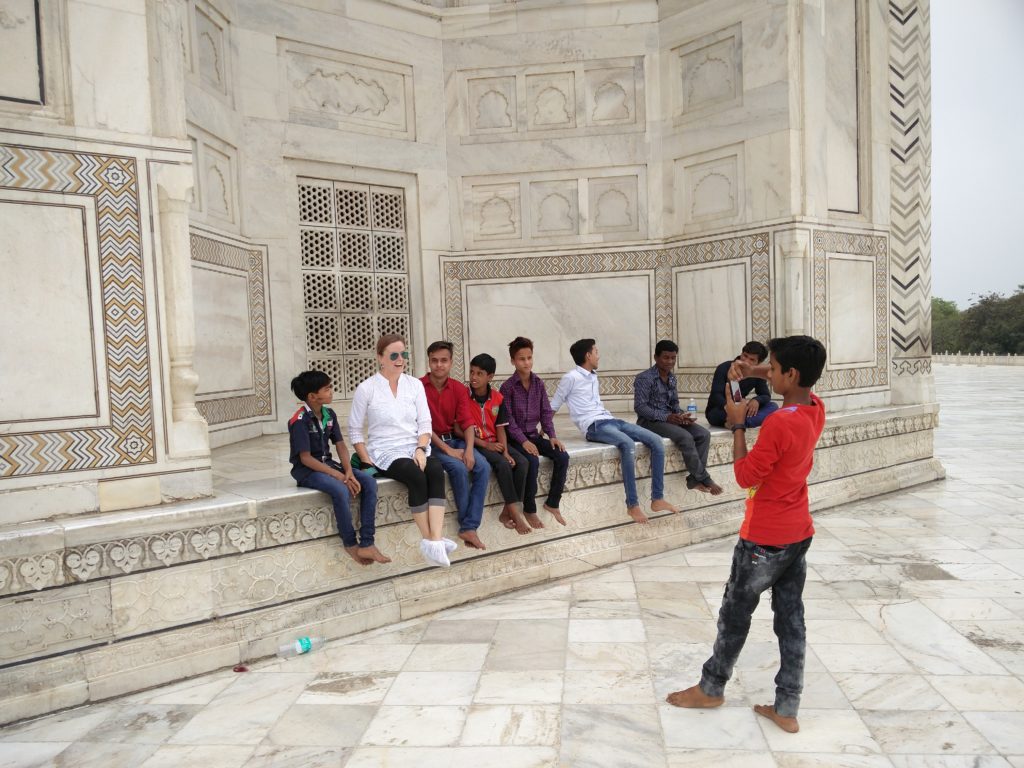
The Taj was definitely awesome to see, especially the painstakingly detailed inlay work (made of marble and stones like carnelian and rubies) that covered the entire structure.
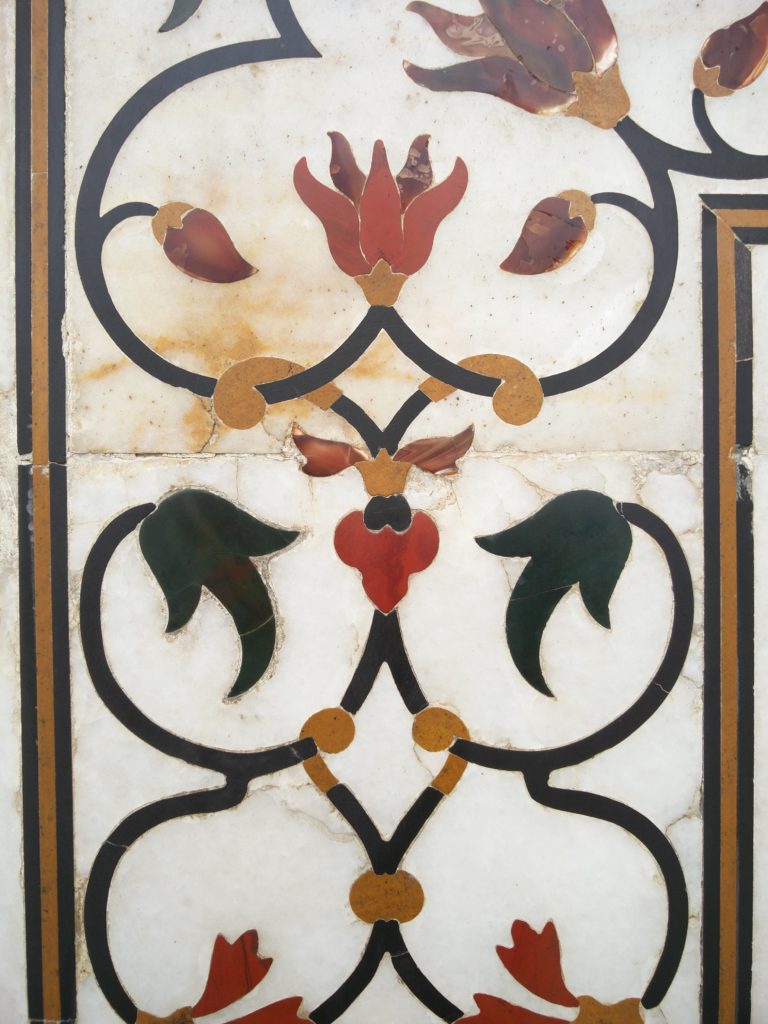
That said, for us we weren’t sure if it had been worth the trip to Delhi and all the driving (unlike other places we’d heard could be overrated, like Machu Picchu, but which actually lived up to expectation). Still, it was a good way to finish our month in India, and see us off to our next destination, nearby Nepal!
